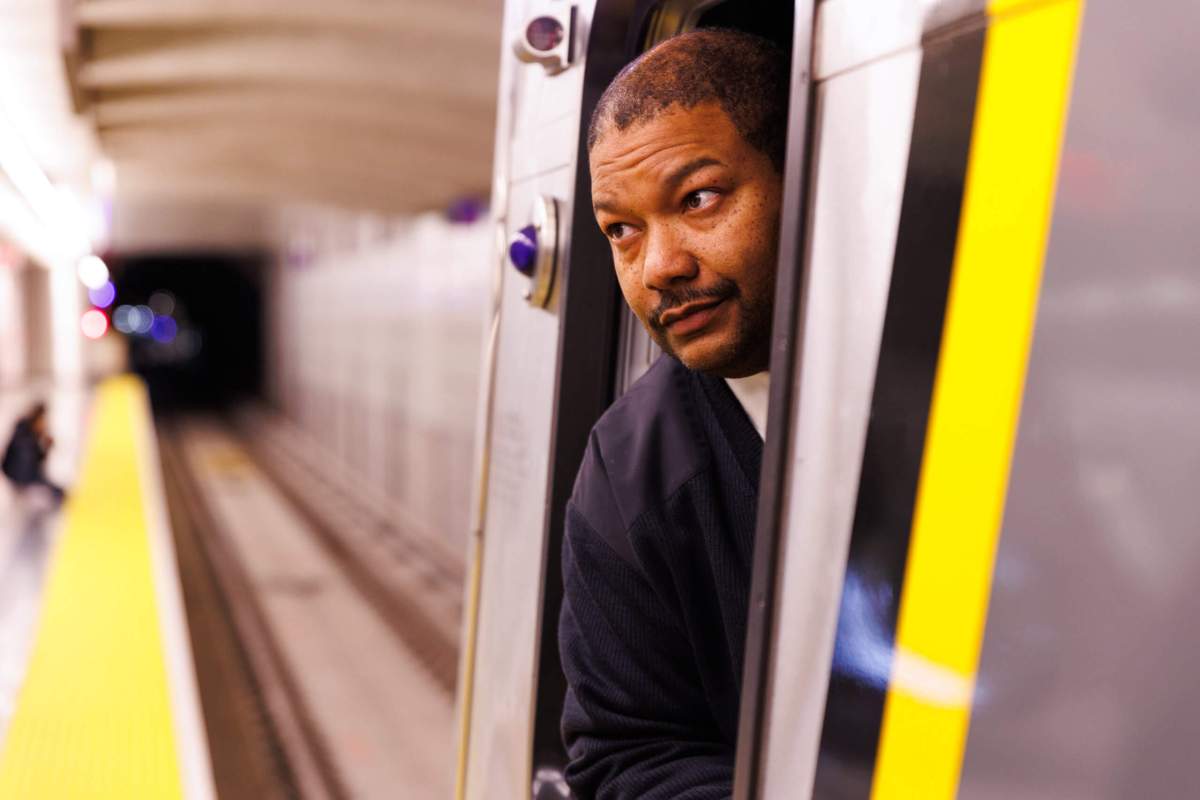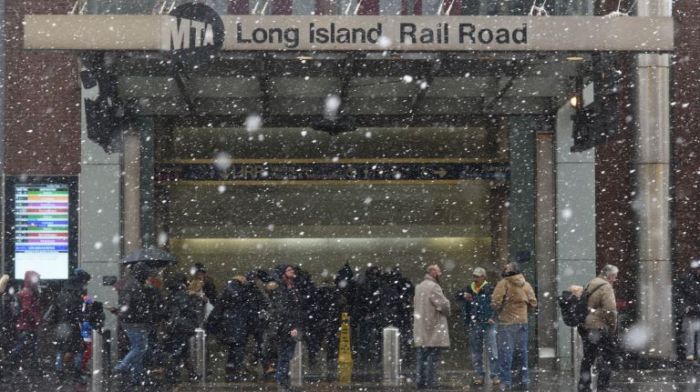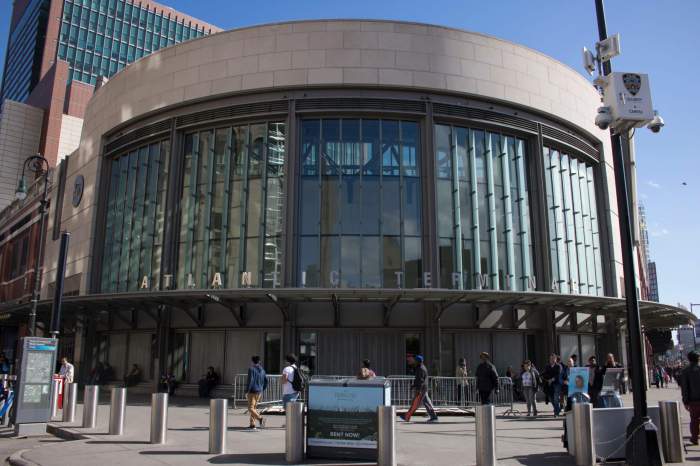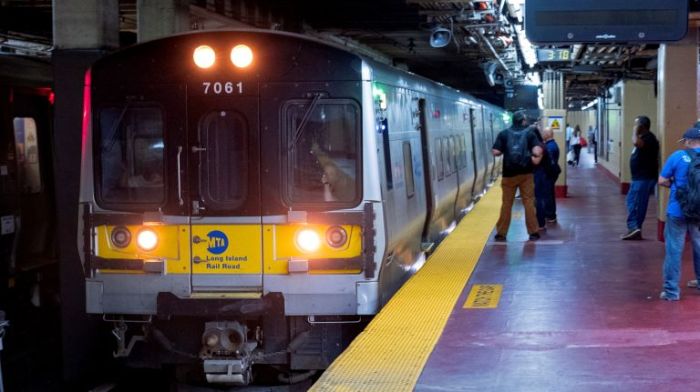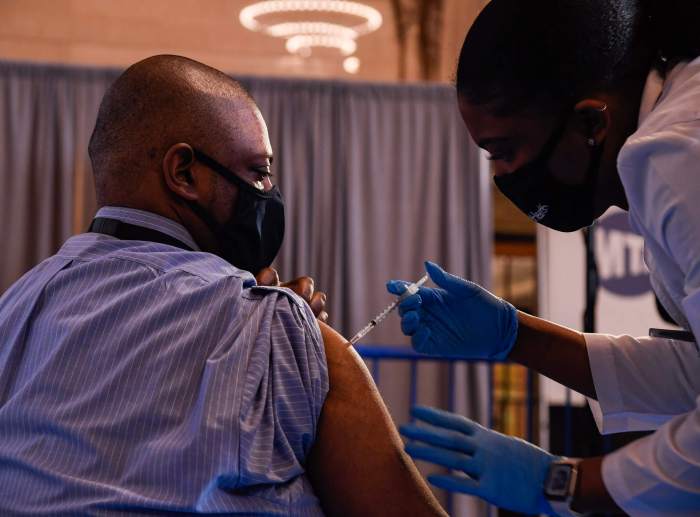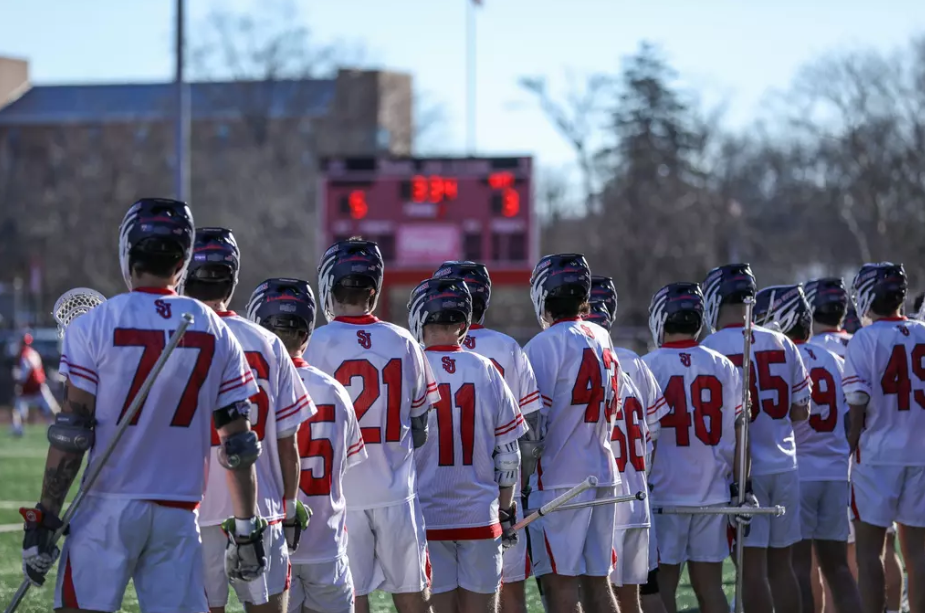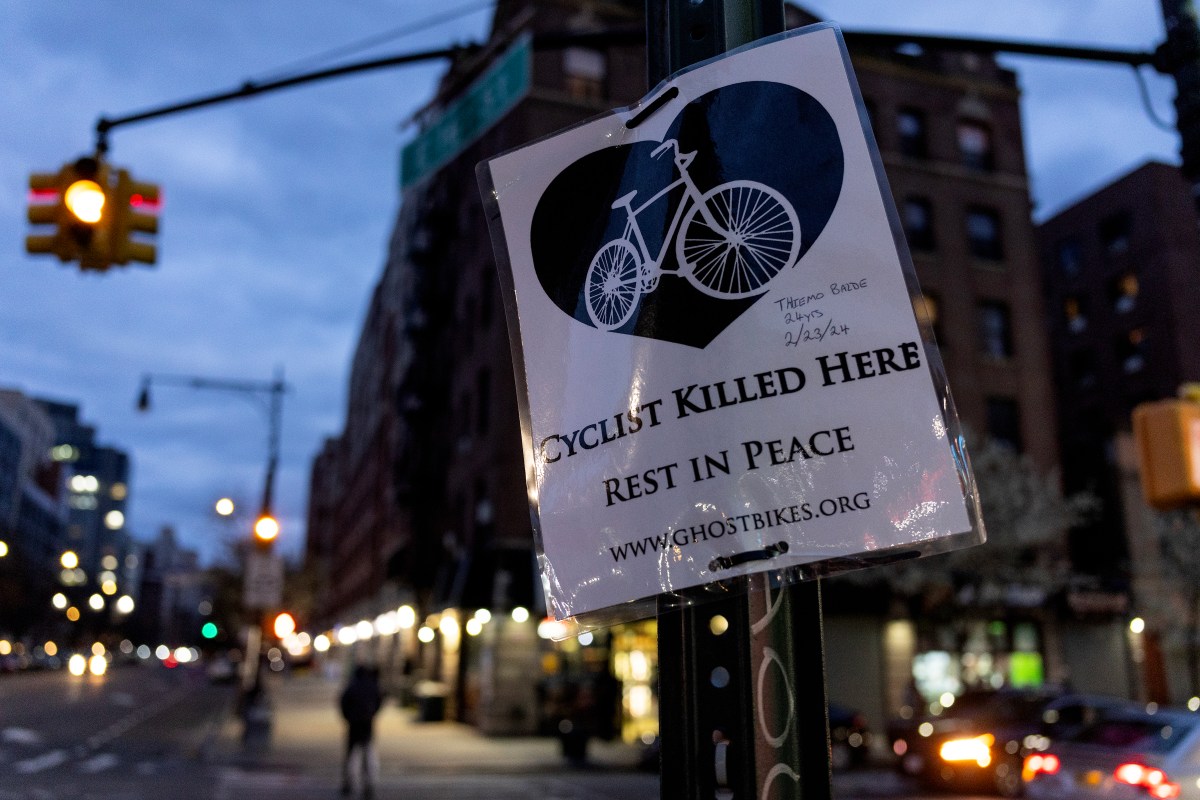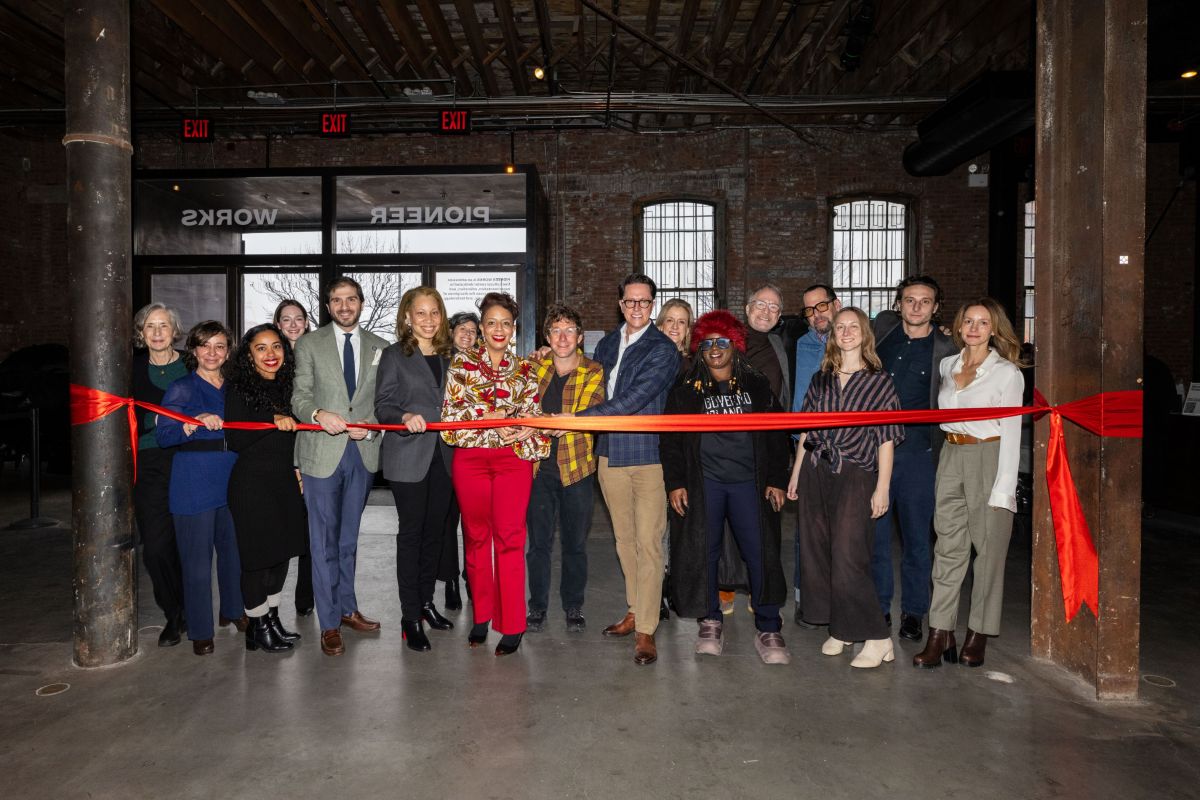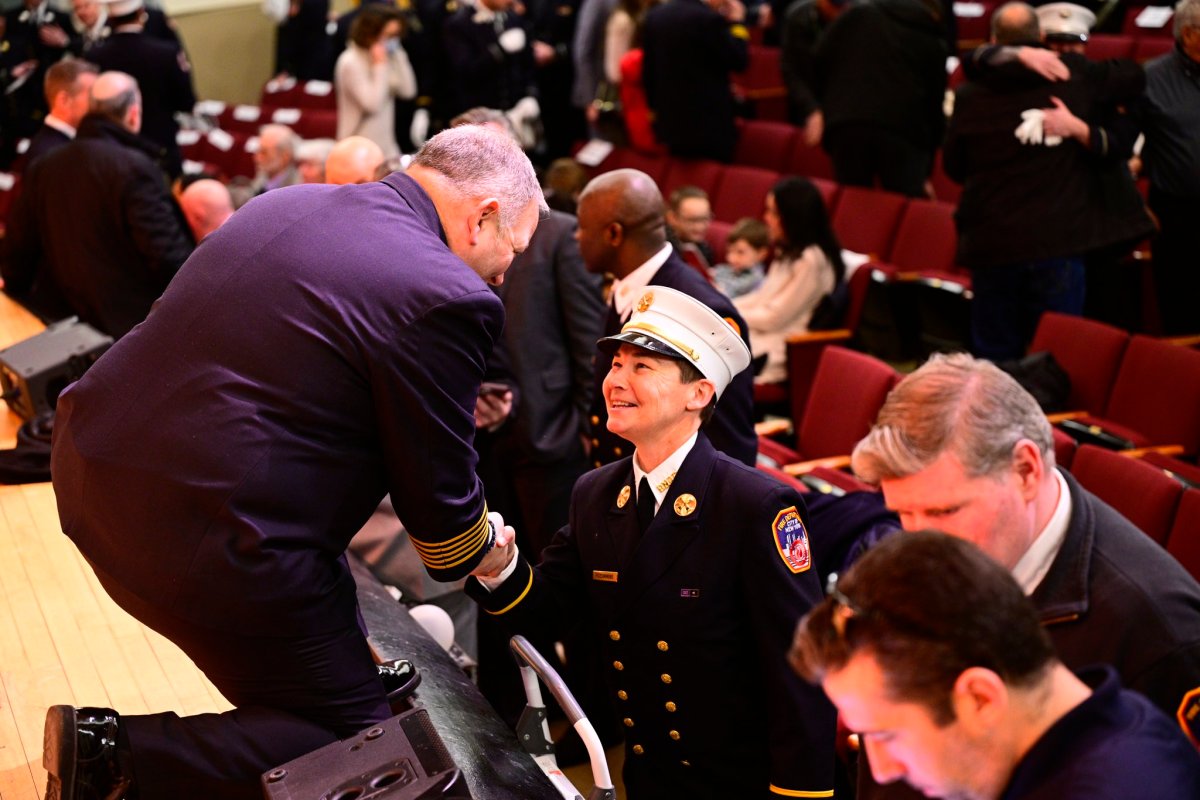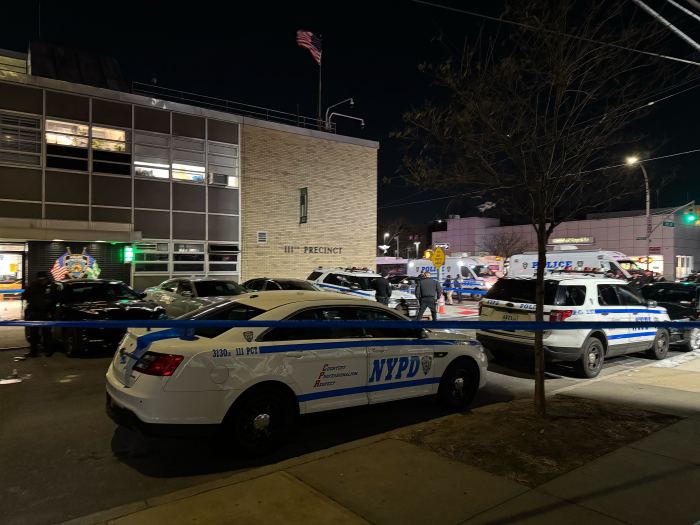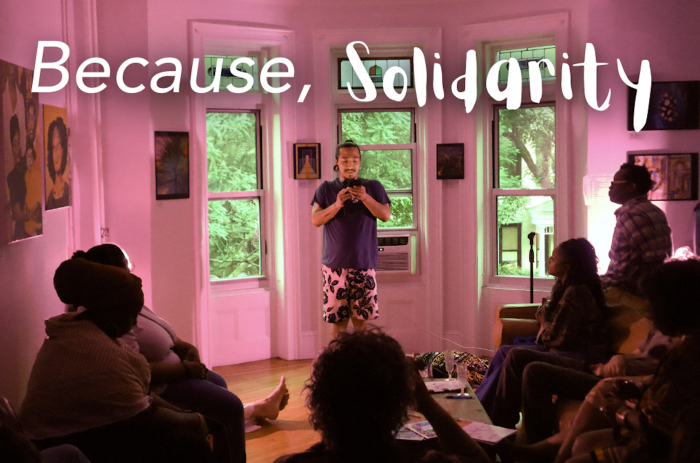The first Long Island Rail Road train to Grand Central Terminal arrived deep under the East Side Wednesday morning — finally realizing a decades-long dream to bring the LIRR to the transit hub and signaling a “new chapter” for transit in the New York region.
The “Grand Central Direct” shuttle train left Jamaica, Queens at 10:46 a.m. on Jan. 25, carrying Governor Kathy Hochul, MTA Chair Janno Lieber and 900 other commuters, MTA officials, and railfans hoping to catch the historic ride.
Traversing the railroad’s tunnel under the East River, the train pulled into Grand Central Madison terminal, some 17 stories below Manhattan, 21 minutes later at 11:07.
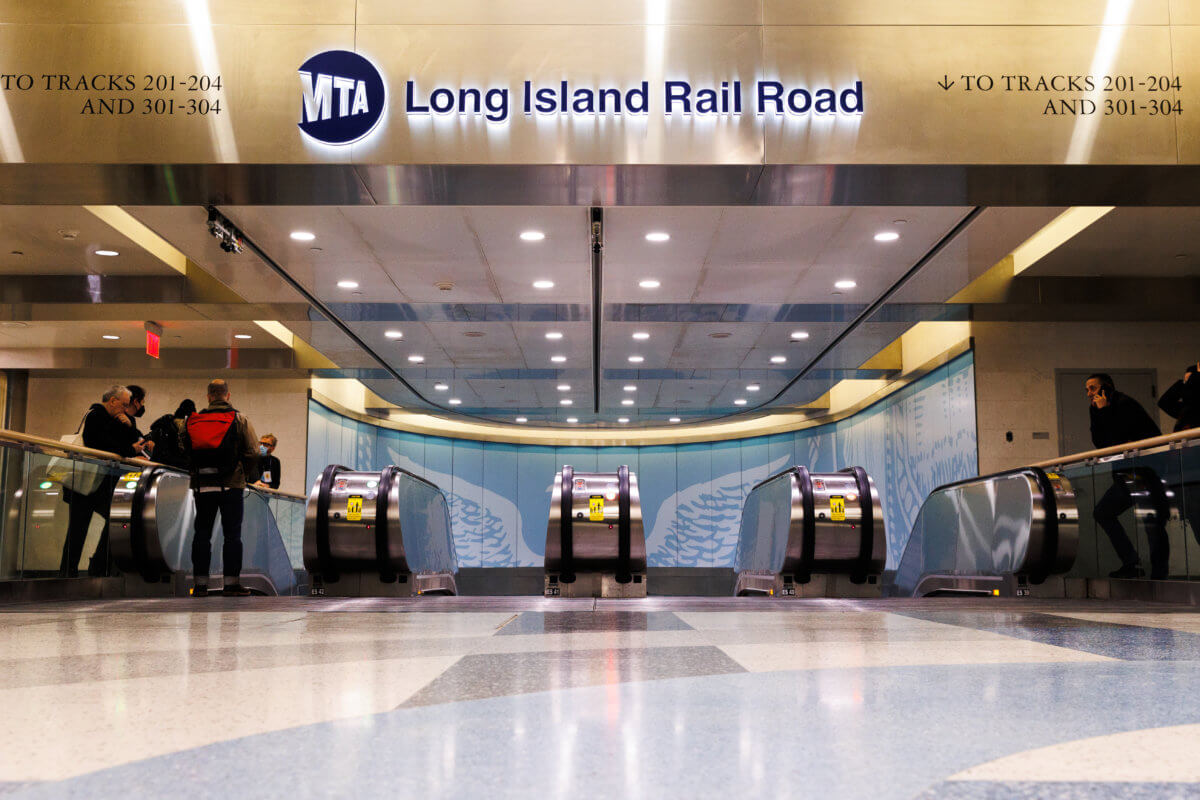
“My message to New York is come, see this amazing new facility,” Lieber told reporters after ascending with Hochul from the train platform, on one of New York’s longest escalators. “We love Grand Central, it is the Temple of Mass Transit. And now it has a new chapter.”
The 714,000-square-foot, 1,000-foot-long terminal, directly below Grand Central, is the first major new passenger train terminal in the United States in 67 years, Hochul said, and the first major expansion of the LIRR in more than a century.
For its first few weeks, Grand Central Madison will only host the shuttle to and from Jamaica, intended to allow riders to get acquainted with the new terminal. In the coming weeks, though, when schedules are finalized, the terminal will enable a 40% increase in train capacity on the LIRR, and shave about 30-40 minutes off the commutes of Long Islanders heading to the East Side — who presently have to go all the way to Penn Station only to schlep back east to get to work.
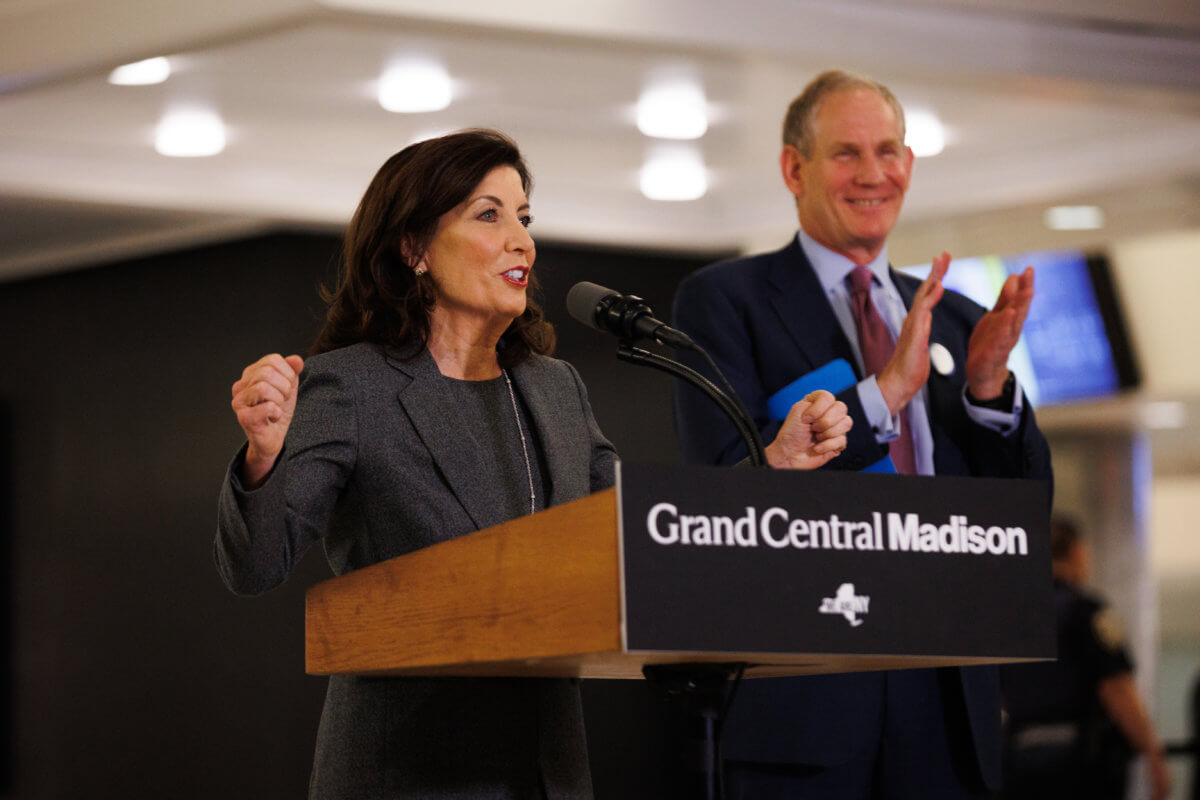
“For our commuters, the people we represent, the ones we care the most about, we are giving them something that’s precious. We’re giving them time back in their lives,” said Hochul. “As a mom, I know extra 30-40 minutes to be back with your kids, helping them pack the lunches, do the homework at the end of the day, maybe even taking care of yourself a little bit. This is all a gift.”
The project also facilitates a more seamlessly integrated rail network throughout the New York metropolitan area: now, someone traveling from Long Island to Westchester County could take an LIRR train to Grand Central and transfer in the same facility to a Metro-North train, instead of hiking it from Penn Station to Grand Central.
Work is currently underway on another megaproject to bring the same capabilities to Penn Station: Constructing new Metro-North stations in the Bronx and bringing that commuter railroad into the West Side terminus.
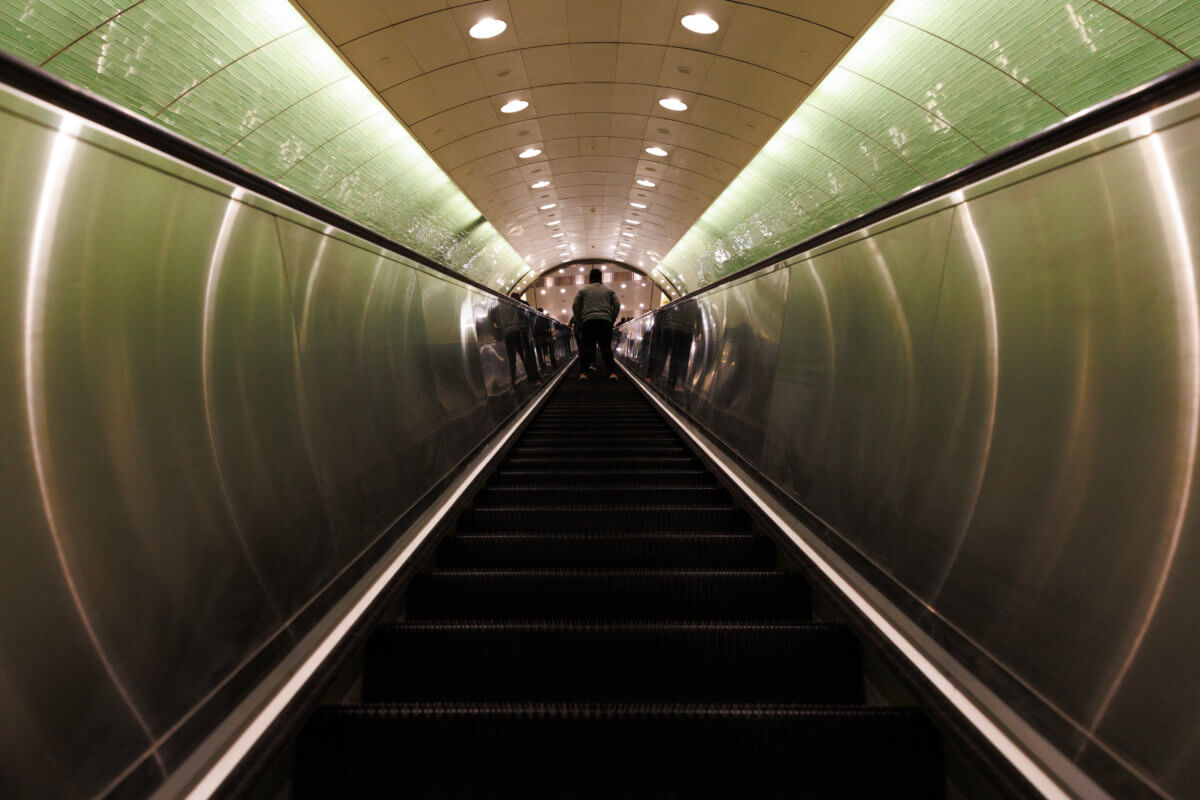
Taking advantage of that integration, the MTA is promoting its newly 24/7 “City Ticket,” charging riders $5 to travel between commuter rail stations situated in New York City, even if the trip involves a transfer between the LIRR and Metro-North at Grand Central.
Riders traveling outside the five boroughs can use a “Combo Ticket,” adding $8 to the base fare to transfer between commuter rail lines and travel throughout the metropolitan area.
“I think it’s great that we’re expanding our transit network,” said Sterling Tejada, a Brooklyn resident marveling at the new terminal Wednesday morning. “It will benefit so many riders, especially those from Long Island. They will actually save time, they wouldn’t really have to transfer to a subway to get to the east side, so this cuts time. This is a really good investment.”
The governor said her Wednesday morning ride went pretty smooth, but the road to this moment was anything but.
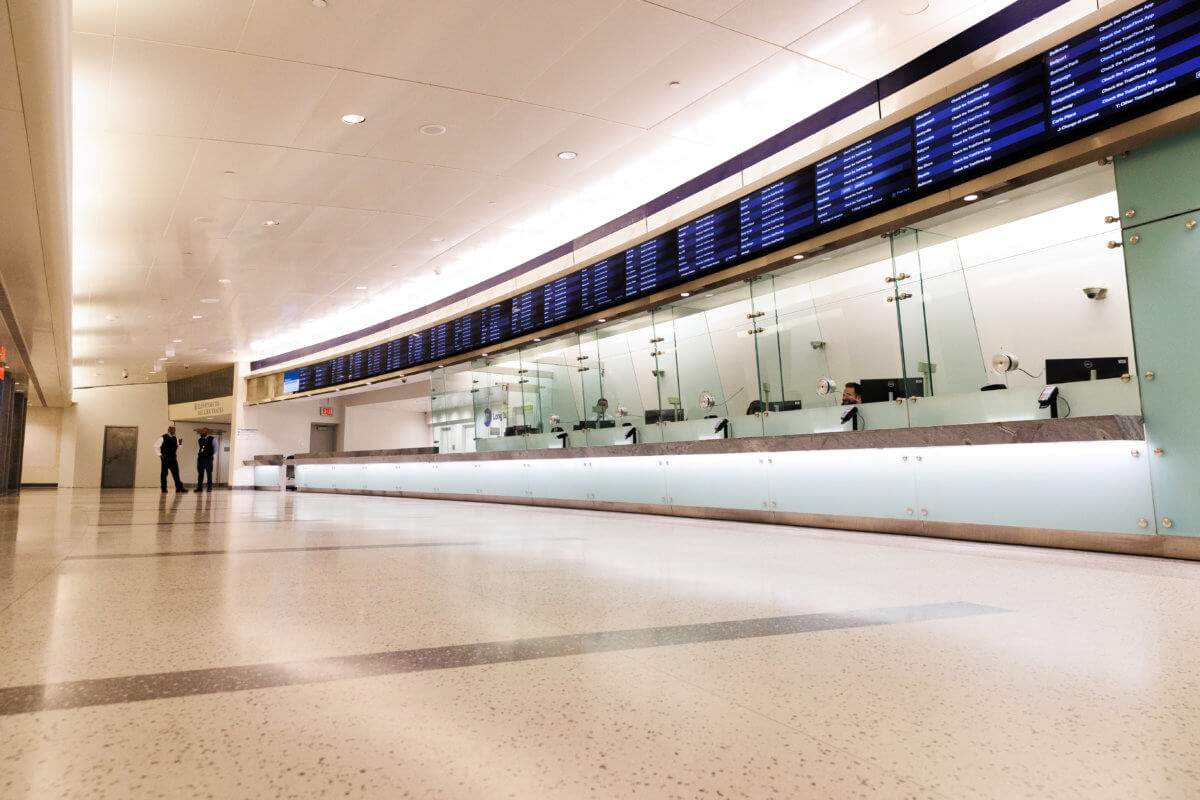
“It was quite a journey to get here. I’m not talking about the 22-minute ride from Jamaica station. I’m literally talking about something that started under eight of my predecessor governors,” Hochul said. “It’s been nine governors who’ve worked to try to get this accomplished. People lived and died never seeing this come to fruition, until now, until this very moment.”
Transit wags first floated bringing the LIRR to the East Side way back in 1963, before the MTA even existed. A new tunnel under the East River was completed in 1972 but, with the city’s fiscal health on the brink, civic leaders abandoned the project and it lay dormant for nearly three decades.
The project was revived in the 1990s, with plans to connect the tunnel to the LIRR right-of-way and Grand Central, and in 2001 MTA officials estimated it would be complete by 2011 at a cost of $4.3 billion. But the megaproject became something of a mega-boondoggle, suffering from chronic mismanagement, frequent construction delays, and massive cost overruns under numerous leaders in government and at the MTA.
The final price tag, more than a decade late, sits at around $11.6 billion, one of the most expensive infrastructure projects in American history.
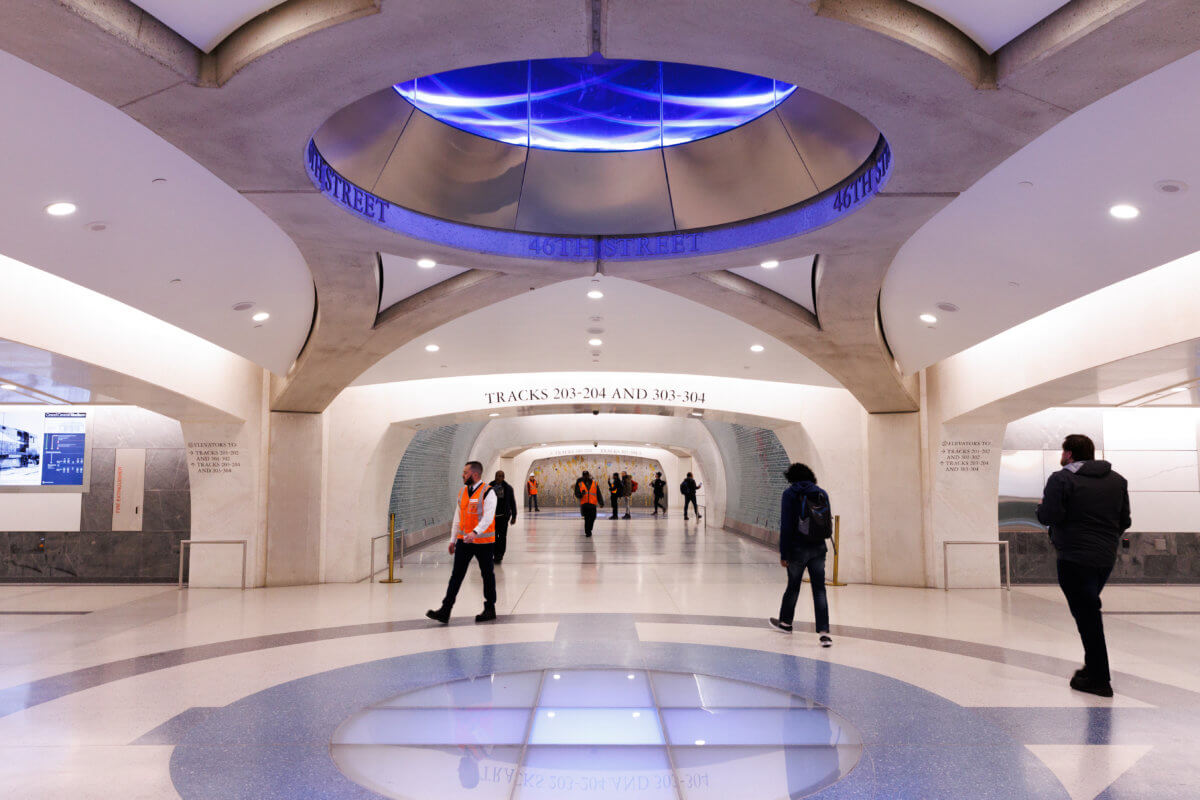
As some of the state’s most powerful officials, both Hochul and Lieber to an extent took ownership for the project’s chaos as it finally came to fruition. But even moreso, the two spoke of one another as political soulmates of sorts, brought together by destiny to restore order to a mess of legendary proportions.
When Lieber took the helm of the MTA’s construction division in 2017, he said, government officials he spoke with “said to me, in my early days at the MTA, ‘don’t waste your time, don’t sully your reputation by becoming too associated with East Side Access.'”
Lieber ignored them: he “tore the project apart and put it back together again,” and pledged repeatedly to get it done by the end of 2022 (he said a “grace period” of three weeks was warranted, after opening plans were snagged by a faulty fan posing issues for the terminal’s ventilation).
Lieber said that “core lessons” had been learned from East Side Access that the MTA has already internalized for its current and future megaprojects, from the Second Avenue Subway to revitalizing Penn Station, to making the entire subway system accessible for those with disabilities.
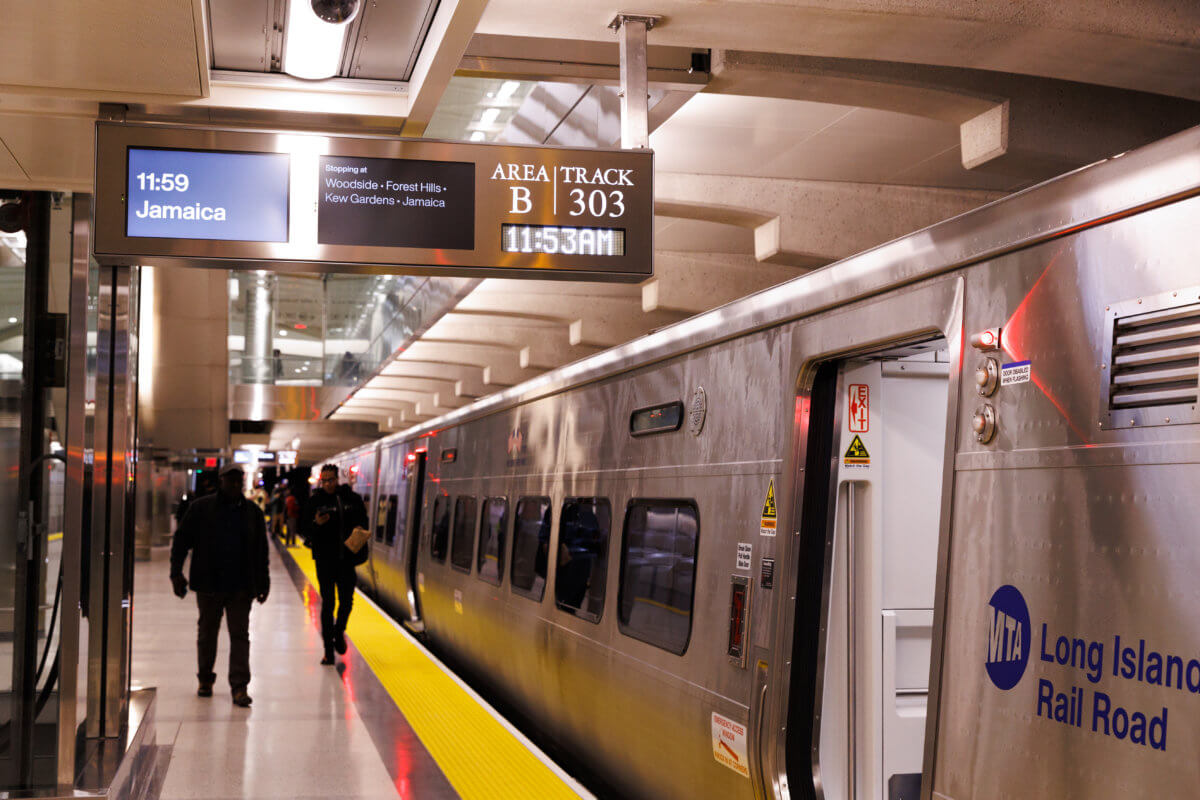
They include: don’t “balkanize” work into dozens of separate, oft-overlapping contracts, and instead utilize “design-build” to consolidate work and create accountability; have a “totally detailed schedule” itemizing every piece of work that needs doing; and don’t be afraid of painful but temporary service shutdowns to quickly complete work on projects improving service long-term.
The governor, who brought Lieber on as chair and CEO full-time last year, had a simpler takeaway: “bring in Janno Lieber a lot earlier.”
Far from being a laughingstock, the pair said that current and future megaprojects will be seen as an international model of efficient capital work in a dense urban core. Pressed by amNewYork Metro, Hochul said New Yorkers can expect to be riding one of the most ambitious projects she’s championed — the Interborough Express, a new light rail line connecting Brooklyn and Queens — on a much speedier and more cost-efficient timeline.
“Twenty-five years from now we’ll say, ‘we’ve been riding [the IBX] for a long time,'” said the governor. “Is it a major project? Yes. Is it going to cost money? Yes. Am I afraid to lean into it and make commitments? No! This is what we do, this is how we change the trajectory of this state. We identify projects that improve people’s lives, make it easier to be a New Yorker. That’s what this is all about.”



